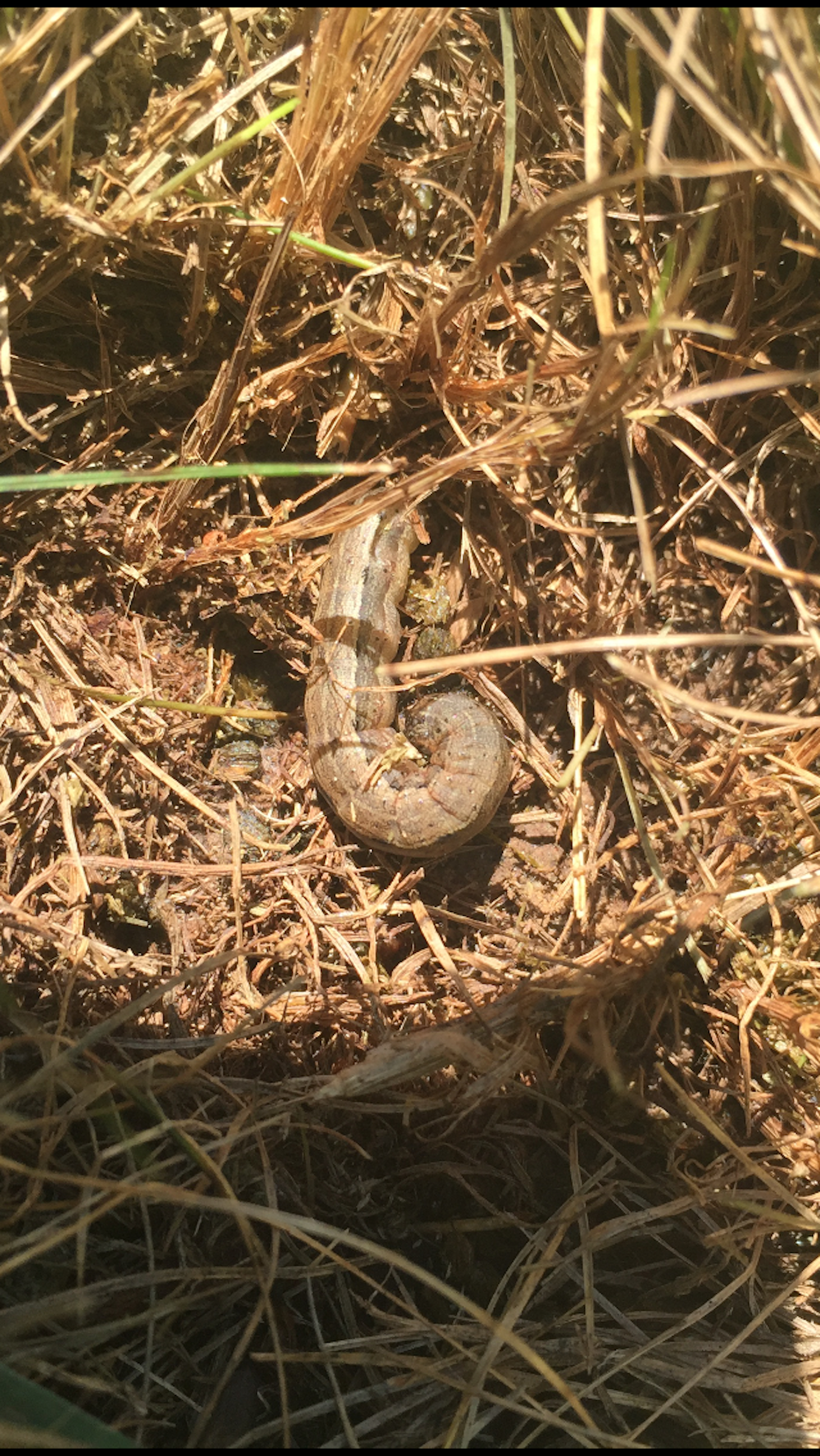Stopping the Invasion
If you think you have armyworms, here’s some steps you can take:› Armyworm caterpillars are a greenish-brown, about 1-1/2-inch in length and about half the width of a little finger. Adults — which are moths — are tan or brown, less than an inch long and have a white spot in the middle of each forewing.› Egg-laying females — they can lay 1,000 eggs at a time — prefer to attach their eggs on tree leaves.› As larvae move into a lawn, damage usually first becomes apparent near the edges. Brown patches are left in their wake. › Grass blades are ragged where the worms feed and, in large infestations, the blades may be sheared to the ground.› Fall armyworms are most active early in morning or late at night.› They particularly love zoysia and bermuda grass.› The most severe damage comes in hot, dry weather.› They’re relatively easy to treat with insecticides, but it may take several treatments.
Think those dark patches across your lawn are the result of drought?
Look closer.
Local lawn and garden stores are reporting a groundswell of calls from homeowners whose yards are under attack by armyworms. These ravenous little creepy-crawlers, which look like 1-1/2-inch-long caterpillars, can chew through an entire lawn in as little as two days.
"People started calling about their yards being brown three weeks ago. We thought it was the result of 90 days of 90-degree weather and the drought," says Renata Clark, who co-owns Lawn Doctor with her husband, Allen.
"But when Allen went to see a couple of yards on Lookout Mountain, he found armyworms. We live on Lookout, and we found some in our backyard."
Tina Hullender of Signal Mountain says she noticed "browned-out areas" in her yard's turf and, when she took a closer look, she found an abnormality.
"The weeds were green and thriving where grass had died," she says. "That's a big indicator as told to me by a landscaper. To confirm it, I pulled up some turf at the borderline between dead turf and green turf to look for the grubs."
Her suspicions confirmed, she spread the insecticide Grub X. Hullender says about 30 percent of her neighborhood is affected.
Aerial & Ground Assaults
These destructive pests get their name from the fact that they can cluster and travel like little insect battalions, consuming everything in their path like an army on the march.
"They come in the yard and, by the time you notice them, the yard is destroyed. They can finish a yard in 24 hours," says Clark.
Their life cycle begins with an aerial assault by gray moths, recognizable by signature white spots on the tip of their wings. According to information from Bud Hines, president of Hamilton County Master Gardeners, each female lays about 1,000 eggs in masses. Within 10 days, larvae emerge and search for food.
Fall armyworms are most active early in morning or late at night. They will crawl together, attacking crops, fields, yards - with a particular affinity for zoysia and bermuda grass.
After feeding for two to three weeks, the larvae dig into the ground to pupate until they emerge as moths a couple of weeks later. Then the females repeat the cycle.
Kat McGraw, general manager of Ooltewah Nursery and Landscape Co., says a mild winter, in combination with this summer's drought, set up perfect conditions for the invasion.
"Usually armyworm eggs die over winter, but we had a fairly mild winter and those eggs didn't die," she says. "Generally, when you see armyworms is when it starts cooling down in the fall and after we've had a really dry spell. Well, we've had weeks of drought, then that one little rain about two weeks ago, which was just what they needed to all hatch out at one time."
Detergent Test
There's an easy way to test for infestation, McGraw says. Add a quarter-cup of Dawn dishwashing liquid to a gallon of water. Pour the mixture over the affected ground. Wait a few minutes and armyworms will rise to the surface if they are there.
"It will flush them out," says McGraw. "Dawn is not organic but is somewhat of a natural insecticide."
Homeowners also can try to find them with the naked eye, she adds.
"Armyworms usually come to the surface at night," McGraw explains. "If you have brown grass, they get a green-brown color, so they are fairly camouflaged. But go out with a flashlight and look. They will be down toward the bottom of the grass blade. They are not down in the roots, they are on top of the ground, eating the blades of grass."
Treatments
Of course, homeowners can always call a professional to handle the problem, but die-hard do-it-yourselfers will want to fix it themselves. McGraw recommends spreading Sevin or Spectracide over the affected ground.
"Both insecticides are granular, although you can get them in a spray, and will need to be watered in," she says. "You might even need to do two applications."
Associates at Home Depot suggest Bayer Advanced Grub Killer Plus, also a granule, which kills grubs within 24 hours.
McGraw adds that armyworms can lay eggs again, so it's smart to wait a couple of weeks and lay down a second application of insecticide to hit any stragglers.
And if armyworms destroyed your lawn, there's really no "repairing." Just start over, say the professionals.
While late September into October is when homeowners are usually reseeding yards, McGraw advises waiting until "you see new blades coming up" before reseeding.
"If you have a thick ground surface - such as an established lawn of four or five years - you should aerate before reseeding. It's good to aerate every three to four years anyway to break up compaction," she says.
After seeding the ground, McGraw says to cover bare spots with straw to prevent seed from washing away.
And, judging by the number of calls for help against armyworms her company has taken since September, McGraw says, "I'm sure there are a lot of people this fall who will be starting yards from scratch."
Contact Susan Pierce at spierce@timesfreepress.com or 423-757-6284.


